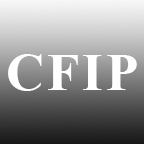Ambitious Morocco Determined to Bridge Two Worlds
Moving Fast, Not Breaking Things
In November, the first high-speed railway line of Africa entered into service, linking Tangier and Casablanca via the country’s capital Rabat. Over the entire 350-kilometre stretch, the ‘Al Boraq’ (named after a mythical winged creature) slashes journey times by more than half to barely two hours between its two termini.
The inaugural ride of the train was attended by King Mohammed VI and French President Emmanuel Macron who boarded the Al Boraq in Tangier for the 75-minute high-speed ride Rabat. The Al Boraq is capable of reaching speeds in excess of 320 km/hr. The first 200-kilometre section of the line between Tangier and Rabat cost $2.1 billion and took almost a decade to build. Between the capital and Casablanca, the train travels over the existing rail network at a maximum speed of 160 km/hr.
The Moroccan TGV is, however, a true high speed train that travels at almost twice the speed of South Africa’s Gautrain, the 80-kilometre long commuter line partially built and completed for the 2010 World Cup.
The Moroccan high-speed line’s rolling stock is identical to the famed Avelia Euroduplex TGV in France and was manufactured by Alstom. The country’s national railway operator Office National des Chemins de Fer (ONCF) acquired a total of twelve trains, each capable of transporting 533 passengers. Each trainset comprises a string of eight cars, including a dining car and two first class carriages. ONCF has also opted to incorporate the full two-level European Rail Traffic Management System in order to ensure the highest safety standard.
According to ONCF director general Mohamed Rabie Khlie, the company expects passenger volumes to double over the next three years to around six million annually, enabling solid operating margins that will justify the investment. Mr Khlie also said that the new line will avoid network saturation, ease mobility issues, and help attract businesses. He also noted that the investment, whilst significant, amounts to just a fraction of what a similarly well-equipped railway line would cost in Europe.
A Statement
More than just another train, the Al Boraq is a statement: Morocco is open for business and moving at high speed. The country has invested heavily in the development of a world class infrastructure with modern motorways, expanded ports, and fully-featured free zones that have already welcomed major automobile and aeronautics manufacturers.
Whilst developing and rebuilding the country’s infrastructure, the government has been careful to insert a number of legislative reforms that encourage competition in the previously closed road haulage, aviation, merchant navy, and port services sectors. Thus, the investments have not only updated and expanded the physical assets that underpin the economy, but introduced new ways of doing business as well.
The aeronautical industry is a case in point. Morocco is now home to more than 110 companies serving the aerospace industry. They collectively employ well over 11,500 people. The Casablanca Free Zone near Nouaceur has been transformed in an aeronautics hub. Its dynamic environment, and the presence of nearly all major players, now attracts scores of corporates looking to tap into this ready-made universe of engineering excellence.
French industrial giant Safran, present in Morocco since 2001, supplies Boeing, Airbus, and Dassault Aviation with about 140,000 wiring harnesses annually from its facility in Nouaceur and recently announced that it will start manufacturing aircraft parts made of composite materials in a new first for the country – and the continent. Safran’s steady expansion has also led to the emergence of a sizeable local supply chain that allows to company to quickly match production to demand, drastically reducing response times.
Boeing, Dassault, and EADS Aviation are amongst the big aeronautical corporates that maintain a presence in Morocco. Canadian Bombardier also landed in Nouaceur where it now produces the flight controls for its CRJ Series of aircraft. Morocco’s aerospace sector is positively booming with annual growth rates exceeding 15%.
High Tech Hubs
Encouraged and inspired by this story of unmitigated success, the Moroccan government in 2017 decided to replicate the formula and set up a high-tech hub near Tangier. Mohammed VI Tech City is to cover an area of around 2,000 hectares and requires an initial investment of $1 billion. The project was unveiled last year and is primarily, though not exclusively, aimed at Chinese businesses that wish to gain a foothold close to Europe. In its first ten years, the tech hub is expected to create at least 100,000 jobs with ninety percent of the work going to the local population of the depressed northern region. With financial backing of the BMCE Bank, a Moroccan financial services provider with a global footprint, the developers have already received expressions of interest from some 200 Chinese companies.
The growing number of large free zones and the updated logistics infrastructure form part of a much broader development policy that seeks to leverage Morocco’s exceptional geographic location to build an economic bridge between Africa and Europe. Several masterplans have been adopted that jointly aim to improve the local business climate, connect two continents, and transform the country into a regional leader and manufacturing and trading powerhouse.
In barely ten years, the country has improved its business environment enormously, storming through the ranks of the World Bank’s Ease of Doing Business Index from a lowly 130 to a respectable 60th place in 2018. In Africa, only Mauritius (Nº 20) and Rwanda (Nº 29) obtain higher scores. The country is, however, determined to improve its standing further and become Africa’s best place for conducting business.
On the Global Competitiveness Index, compiled annually by the World Economic Forum (WEF), Morocco has moved into the number four spot of Africa after Rwanda (58), Botswana (63), and South Africa (61), confirming the efficacy of the reform programme initiated in 2005. Though the country has a long tradition of economic stability, growth rates remained relatively low to moderate during the early 1990s and early-2000s. Morocco, however, did avoid the debt trap (the current debt-to-GDP ratio hovers around 67% and is expected to peak at 70% in 2020 before receding sharply) whilst maintaining strong foreign exchange reserves, currently estimated at $23 billion.
Diversifying
Moving away from an economy supported mainly by agriculture – an exceptionally uncertain proposition in a country with erratic rainfall – the government from 2001 opened its up to then shielded domestic economy with a series of privatisations and legislative initiatives that ended state monopolies. A slew of public services were opened to the private sector as well, including the buoyant housing sector which has benefited from a series of fiscal stimuli that encourage developers to address the shortage of affordable houses for families on moderate incomes.
A free trade deal with the United States is in force since 2006 whilst Morocco has gained ‘advanced status’ in its relationship with the European Union, enabling high levels of political and economic cooperation. The country also forms part of the Union of the Mediterranean, an intergovernmental body representing the 43 nations that border the Middle Sea, and in 2000 signed an association agreement with the EU that has now been expanded to include a fisheries partnership and an open skies agreement – the latter civil aviation deal, the first one of its kind the union signed with a non-member state.
Talks are now underway to expand the existing free trade agreement to include services as well as agricultural produce. The rapprochement follows years of disappointment, and a little resentment too, after Morocco in 1987 formally applied to join the then-European Community only to be rejected almost instantly on the grounds that the country was not ‘European’ and hence failed to meet the most important of accession criteria.
However, détente has firmly taken hold and in Europe’s Neighbourhood Policy (ENP) the country is widely considered a first amongst equals and the most reliable – and stable – of the EU’s partners. It is precisely that stellar reputation which the government in Rabat now wishes to build on and monetise.
With its African relationships sorted – after an absence of more than thirty years Morocco in 2017 was readmitted to the African Union – the country is ready to take on the role geography has bestowed upon it – that of a bridge between two continents.
Plans for an actual bridge spanning the fourteen kilometres that separate Morocco from Spain, or a combination of a bridge and a tunnel, have been in the works since as far back as 1979. A binational Spanish-Moroccan entity has even been set up to study the technical feasibility of connecting two continents not just separated by a strait but also by a major, and active, geological fault. For now this remains a $5 billion pipe dream; however, with Morocco’s raised level of ambition, it could just come true in the none too distance future.
Cover photo: The Al Boraq at the Tangier terminus.


